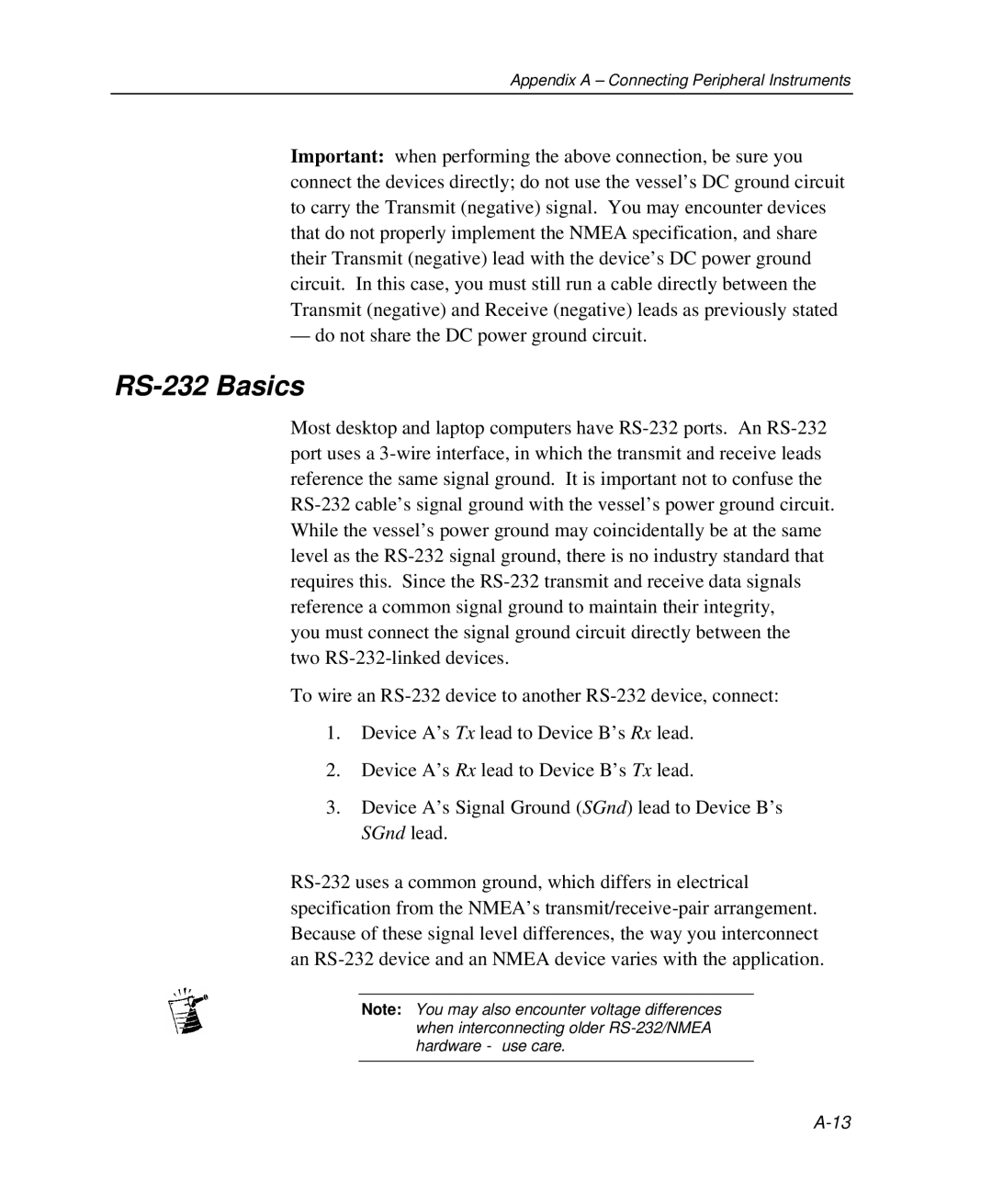
Appendix A – Connecting Peripheral Instruments
Important: when performing the above connection, be sure you connect the devices directly; do not use the vessel’s DC ground circuit to carry the Transmit (negative) signal. You may encounter devices that do not properly implement the NMEA specification, and share their Transmit (negative) lead with the device’s DC power ground circuit. In this case, you must still run a cable directly between the Transmit (negative) and Receive (negative) leads as previously stated
— do not share the DC power ground circuit.
RS-232 Basics
Most desktop and laptop computers have
you must connect the signal ground circuit directly between the two
To wire an
1.Device A’s Tx lead to Device B’s Rx lead.
2.Device A’s Rx lead to Device B’s Tx lead.
3.Device A’s Signal Ground (SGnd) lead to Device B’s SGnd lead.
Note: You may also encounter voltage differences when interconnecting older
